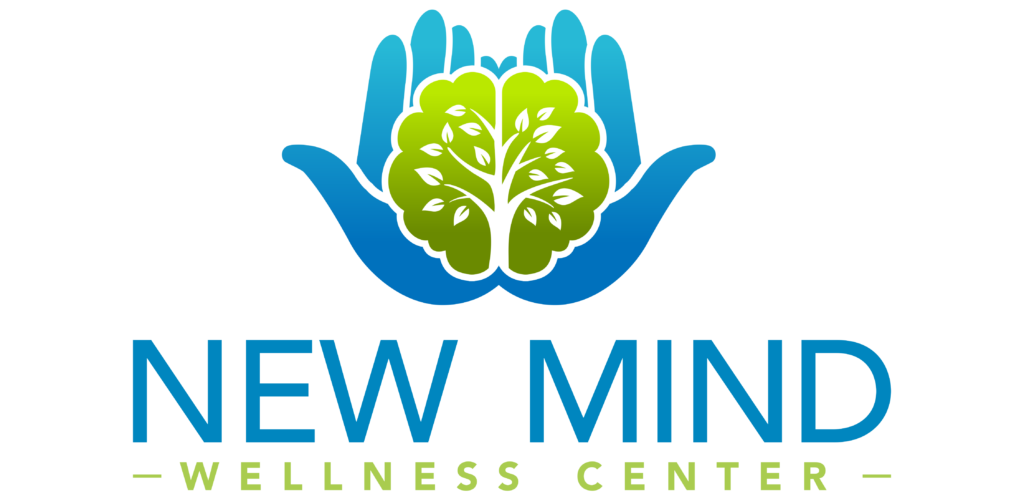
Anxiety Attack vs. Panic Attack: What’s the Difference?
Anxiety and panic can both be highly disruptive and deeply distressing. Thankfully, both are treatable. Knowing the difference between an anxiety attack vs. panic attack can help you find the right treatment for yourself or a loved one.
To learn more about Mental Health Treatment options at New Mind Wellness, call us today or verify your insurance online. We’re excited to help you start your personal recovery journey.
What Are Anxiety and Panic?
In a clinical context, anxiety refers to excessive worry and disproportionate fear. Panic involves the sudden onset of intense fear, often accompanied by physical discomfort.
The fifth edition of the Diagnostic and Statistical Manual of Mental Disorders (DSM-5) includes entries for several anxiety disorders, including:
- Generalized anxiety disorder (GAD)
- Social anxiety disorder (social phobia)
- Separation anxiety disorder
- Agoraphobia
- Specific phobia
- Selective mutism
- Panic disorder
As indicated by the inclusion of panic disorder in the DSM’s list of anxiety disorders, these conditions are not mutually exclusive. In other words, anxiety disorders can also involve symptoms that are characteristic of panic attacks, while panic disorder can also cause anxiety-like symptoms.
Important note: Some people describe particularly severe periods of anxiety as “anxiety attacks.” This is not a clinical term, but it is a common descriptor that we will be using throughout today’s post. Panic attacks, on the other hand, do have established diagnostic criteria in the DSM-5.
Symptoms
Common symptoms of anxiety attacks include:
- Excessive worry, which may or may not be related to a specific event or experience
- General feeling of profound unease
- Sense of impending doom
- Restlessness and agitation
- Difficulty focusing or concentrating
- Irritability
- Headache and/or stomach ache
- Muscle tension
- Changes in appetite and sleep patterns
Panic attacks can involve:
- Dizziness or lightheadedness
- Feeling as though you are going to faint
- Excessive perspiration
- Increased body temperature
- Sense that you are being choked or smothered, or that you can’t catch your breath
- Rapid heartbeat
- Chest pain
- Nausea
- Tingling in hands and feet
- Dissociation, which can include the sense that you have become detached from your thoughts and emotions, body, and/or environment
- Fear that you may be about to die
Prevalence
Anxiety disorders are among the most frequently occurring mental health conditions. The Anxiety and Depression Association of America (ADAA) has reported the following about their prevalence in the U.S.:
- Specific phobia is the most common anxiety disorder, affecting about 19.3 million adults, or 9.1% of people ages 18 and above.
- About 6.8 million adults, or about 3.1% of people in that age range, have generalized anxiety disorder. GAD is twice as common among women than among men.
- About 15 million adults (7.1% of that demographic group) have social anxiety disorder.
- Panic disorder impacts about 2.7% of the adult population, which equals about six million people.
Overall, the ADAA notes, about 40 million adults (or 19.1% of that population) have some type of anxiety disorder. Unfortunately, fewer than 4 out of 10 people who have one of these conditions get appropriate treatment.

Anxiety Attack vs. Panic Attack
Anxiety attacks share a few features with panic attacks, but there are also several differences between the two experiences.
Similarities
The similarities between an anxiety attack and a panic attack include:
- Both are highly distressing.
- Both can be symptomatic of a mental illness within the anxiety disorder category.
- Both can occur in response to a specific trigger or “out of the blue” with no apparent cause.
- Both are treatable.
Differences
Key differences between an anxiety attack vs. a panic attack include:
- As noted earlier in today’s post, “anxiety attack” is not a clinical term. Panic attack, on the other hand, is defined in the DSM-5.
- Anxiety attacks typically last longer than panic attacks do.
- Panic attacks are more likely to occur without a trigger, while anxiety attacks are more likely to have an identifiable cause.
- Psychological distress is the dominant aspect of an anxiety attack, though individuals may also experience physical symptoms. Severe physical discomfort is integral to panic attacks, which also involve psychological pain.
- Neither a panic attack nor an anxiety attack is a mental health disorder. Instead, both of these experiences can be symptoms of various mental illnesses.
Treatment Options for Anxiety Disorders & Panic Attacks
People who have been experiencing panic attacks or other symptoms of anxiety disorders have a range of treatment options.
The continuum of care for these conditions includes:
- Inpatient treatment
- Residential care
- Partial hospitalization program (PHP)
- Intensive outpatient program (IOP)
- Outpatient care
At the inpatient and residential levels, patients live at the centers where they are receiving care:
- Inpatient treatment is usually a short-term intervention with the goal of helping patients achieve stabilization.
- Residential programs offer a longer length of stay, so that patients can learn more about their condition and develop effective symptom-management skills.
PHPs, IOPs, and outpatient treatment do not have a residential component. Patients who receive care at these levels only need to be at the center when treatment is in session.
- PHPs offer the greatest amount of daily and weekly care, with sessions usually provided five to six hours per day, five days per week.
- At the IOP level, patients usually attend three hours of daily treatment, two to five days per week.
- Outpatient sessions can be scheduled on a weekly or monthly basis, or at whatever other frequency is best for each person.
Some people step down to the partial hospitalization, intensive outpatient, or outpatient level after completing an inpatient or residential program. Others begin treatment in a PHP or IOP.
There’s no correct or incorrect path to recovery from anxiety attacks or panic attacks. What’s most important is finding a provider who will develop a customized course of care that aligns with your unique history, needs, and goals.
Find Treatment for Anxiety or Panic Attacks in Philadelphia
New Mind Wellness is a premier source of personalized outpatient care for adults who have been experiencing anxiety attacks, panic attacks, and other symptoms of anxiety disorders.
Programming options at our anxiety treatment center in Philadelphia, PA, include a partial hospitalization program (PHP), an intensive outpatient program (IOP), and outpatient rehab. Within each of these programs, you can expect to receive customized services and compassionate support from a team of highly skilled professionals.
Untreated anxiety and panic attacks can be highly disruptive – but when you get the care you need, you can experience relief from your symptoms and begin to live a much healthier and more satisfying life.
To learn more about how we can help you or a loved one, or to schedule a free consultation, please visit our Contact page or call us today.





